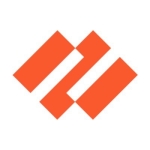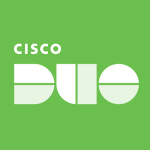We use Cisco Umbrella to deploy policies and configurations for our company internally and some customers.
We use a lot of different Cisco products like Endpoint and Umbrella. With Cisco Umbrella, we get a total picture of security internally, especially for external sources or malware threats. I've only deployed it on one customer, and it's working well so far. We're still going through the full deployment process, but the customer likes the solution, which has worked well.
DNS protection, domain blocking, SIP component, and the Cisco Umbrella roaming client are the valuable features of Cisco Umbrella. With the way the industry is now, even if you're not in the network, you could still get the policies for your organization applied to your computer via the actual hardware or the user.
Cisco Umbrella should add some more documentation on proxies. Different organizations utilize proxies in their environment. With Umbrella, based on my experience, there are some deployment issues. It would be good to have some more documentation that can walk you step by step. The tech support is about 90% and needs to provide more step-by-step processing of the procedure and also a little more background on the solution.
I have been using Cisco Umbrella for about a year.
Cisco Umbrella has good stability.
Cisco Umbrella's scalability works fine. If it's in the cloud and you're pointing to the Cisco Umbrella DNS servers, the more users you have, you add a bigger package or a bigger tier.
Cisco Umbrella's technical support is pretty good. The biggest thing with Cisco support is that you need to ensure you provide all the necessary information. If you give a vague problem, they will give you a lot of potential solutions. With Cisco support, if you get more granular with your information and accurate documentation, you should be able to find a good solution. They usually are very helpful and useful.
Our company chose Cisco Umbrella because it's a SaaS solution. We're working to incorporate different elements into our network internally. That helps us give prospective clients or customers real-life experiences.
The basic package of Cisco Umbrella with the DNS component has been implemented in our customer's network and started working right away. I check the logs, and both the logs and the policy are working. You get a good return on investment from the very basic package in the beginning. You get those same benefits as you move up to the top tiers.
Cisco Umbrella has four tiers, and with each tier, there are different levels of abilities in those packages. You get what you pay for if you break the solution up into tiers.
Cisco Umbrella is deployed via the cloud in our organization.
I would give Cisco Umbrella nine out of ten for securing our infrastructure from end to end. The solution does what it's stated that it would do. With different packages, you get different levels of security. However, the main component of Cisco Umbrella was the DNS component or the DNS protection, which it does very well.
Once you first deploy Cisco Umbrella, you might not have to go back and update the policy config. However, in and of itself, it still requires a level of project time, deployment, design, documentation, and implementation.
I deployed an integration between SecureX and Umbrella for one of our customers. I can jump on SecureX and see if there's any block. I can read the information on SecureX, and then if I need to go to Umbrella, I can click the launch icon, and it will take me right there. That's pretty good and useful.
Cisco Umbrella's ability to consolidate tools has had a good effect on our customer's security infrastructure. SecureX is a big component for a lot of Cisco security suites, and they can integrate all that together. We've integrated a lot of our Cisco products into that one SecureX platform. I don't particularly deal with the internal because that's more our IT department. However, I've viewed the dashboard, and it's very useful. With the customer, we deployed Endpoint, we deployed Umbrella, and we'll be deploying Duo, and then those things can be integrated into SecureX.
Cisco Umbrella's DNS and SecureWeb Gateway components have helped improve our organization's cybersecurity resilience. More granular policies could be built for security, implementation, and ensuring no threats enter our internal organization.
If you're looking for DNS protection without a bunch of firewall commands and configurations, a simple deployment, and a policy build, Cisco Umbrella is a good way to go. It's deployed in the cloud and not hard to deploy. So if you want to get something up and going right away, Cisco Umbrella is a good bet.
Implementing Cisco Umbrella into our environment was pretty easy. I worked on it, and once they gave me access, I did my research and built the policies in adherence to whatever they asked.
Overall, I rate Cisco Umbrella a nine out of ten.




















